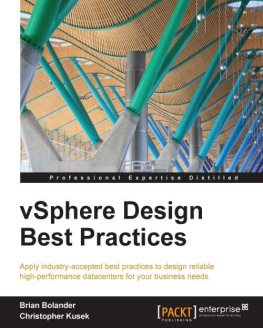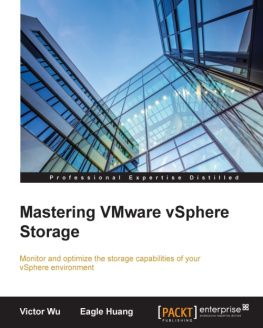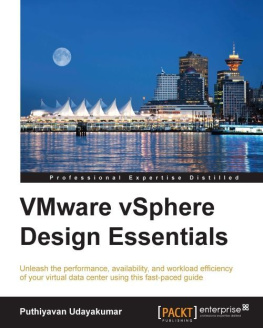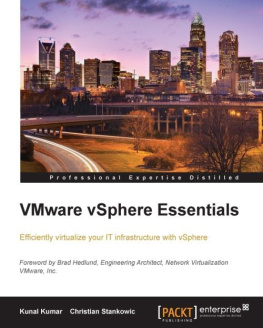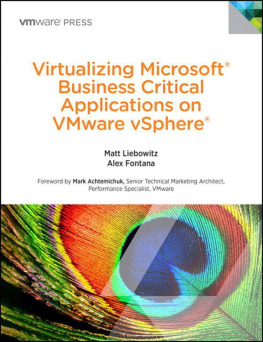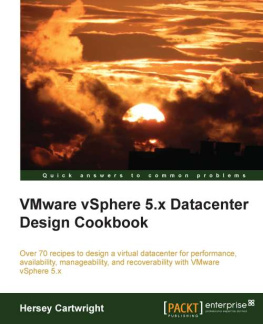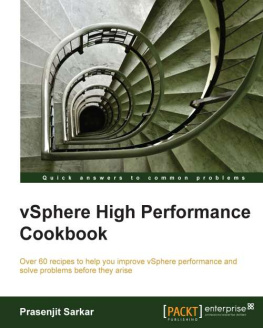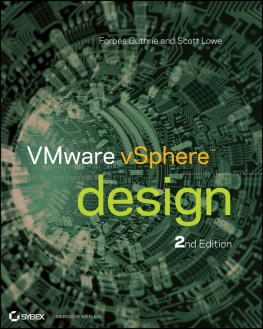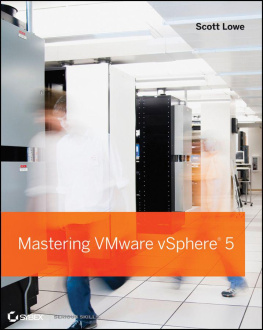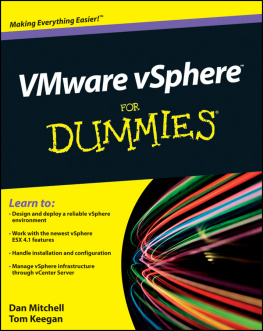Bolander Brian - VSphere Design best practices : apply industry-accepted best practices to design reliable high-performance datacenters for your business needs
Here you can read online Bolander Brian - VSphere Design best practices : apply industry-accepted best practices to design reliable high-performance datacenters for your business needs full text of the book (entire story) in english for free. Download pdf and epub, get meaning, cover and reviews about this ebook. City: Birmingham, U.K, year: 2014, publisher: Packt Publishing - ebooks Account, genre: Home and family. Description of the work, (preface) as well as reviews are available. Best literature library LitArk.com created for fans of good reading and offers a wide selection of genres:
Romance novel
Science fiction
Adventure
Detective
Science
History
Home and family
Prose
Art
Politics
Computer
Non-fiction
Religion
Business
Children
Humor
Choose a favorite category and find really read worthwhile books. Enjoy immersion in the world of imagination, feel the emotions of the characters or learn something new for yourself, make an fascinating discovery.
- Book:VSphere Design best practices : apply industry-accepted best practices to design reliable high-performance datacenters for your business needs
- Author:
- Publisher:Packt Publishing - ebooks Account
- Genre:
- Year:2014
- City:Birmingham, U.K
- Rating:5 / 5
- Favourites:Add to favourites
- Your mark:
VSphere Design best practices : apply industry-accepted best practices to design reliable high-performance datacenters for your business needs: summary, description and annotation
We offer to read an annotation, description, summary or preface (depends on what the author of the book "VSphere Design best practices : apply industry-accepted best practices to design reliable high-performance datacenters for your business needs" wrote himself). If you haven't found the necessary information about the book — write in the comments, we will try to find it.
- Learn how to utilize the robust features of VMware to design, architect, and operate a virtual infrastructure using the VMware vSphere platform
- Customize your vSphere Infrastructure to fit your business needs with specific use-cases for live production environments
- Explore the vast opportunities available to fully leverage your virtualization infrastructure
If you wish to learn about vSphere best practices and how to apply them when designing virtual, high performance, and reliable datacenters that support business critical applications to work more efficiently and to prepare for official certifications, then this is the book for you. Readers should possess a good working knowledge of vSphere as well as servers, storage, and networking.
What You Will Learn- Examine virtual datacenter design scenarios and understand the basics of vSphere clustering, HA, and DRS
- Compare and contrast scale-out versus scale-up designs
- Learn to map the storage Service Level Agreements (SLAs) to business requirements
- Get to know how to design flexible and reliable networks for virtual datacenters
- Inspect existing VMs and design principles to correctly resource and configure virtual machines
- Design different RPO and RTO requirements to plan and test the DR strategy
vSphere allows you to transform your IT infrastructure into a private cloud, then bridge it to public clouds on-demand, delivering an IT infrastructure as an easily accessible service. vSphere delivers uncompromised control over all IT resources with the highest efficiency and choice in the industry.
The book begins with a definition of the core technologies in a virtual datacenter, vCenter, and ESXi. It then covers the architecture of specific virtual datacenter components. Readers will learn design principles related to storage and storage protocols. Moving on to networking, readers will learn to design flexible and reliable networks for their virtual datacenters. After this, Virtual Machine design considerations are reviewed in depth and readers are guided through inspecting existing VMs and design principles for correctly resourced and configured virtual machines.
Bolander Brian: author's other books
Who wrote VSphere Design best practices : apply industry-accepted best practices to design reliable high-performance datacenters for your business needs? Find out the surname, the name of the author of the book and a list of all author's works by series.

